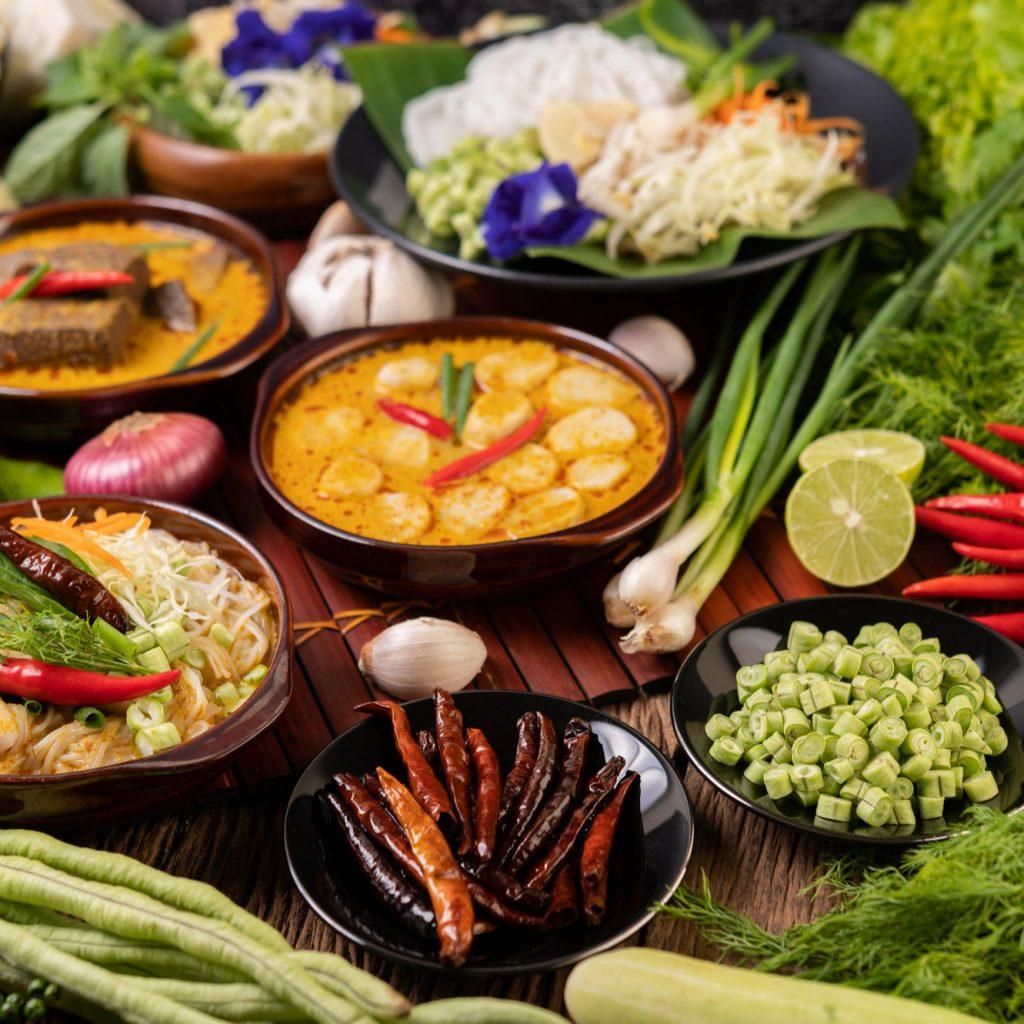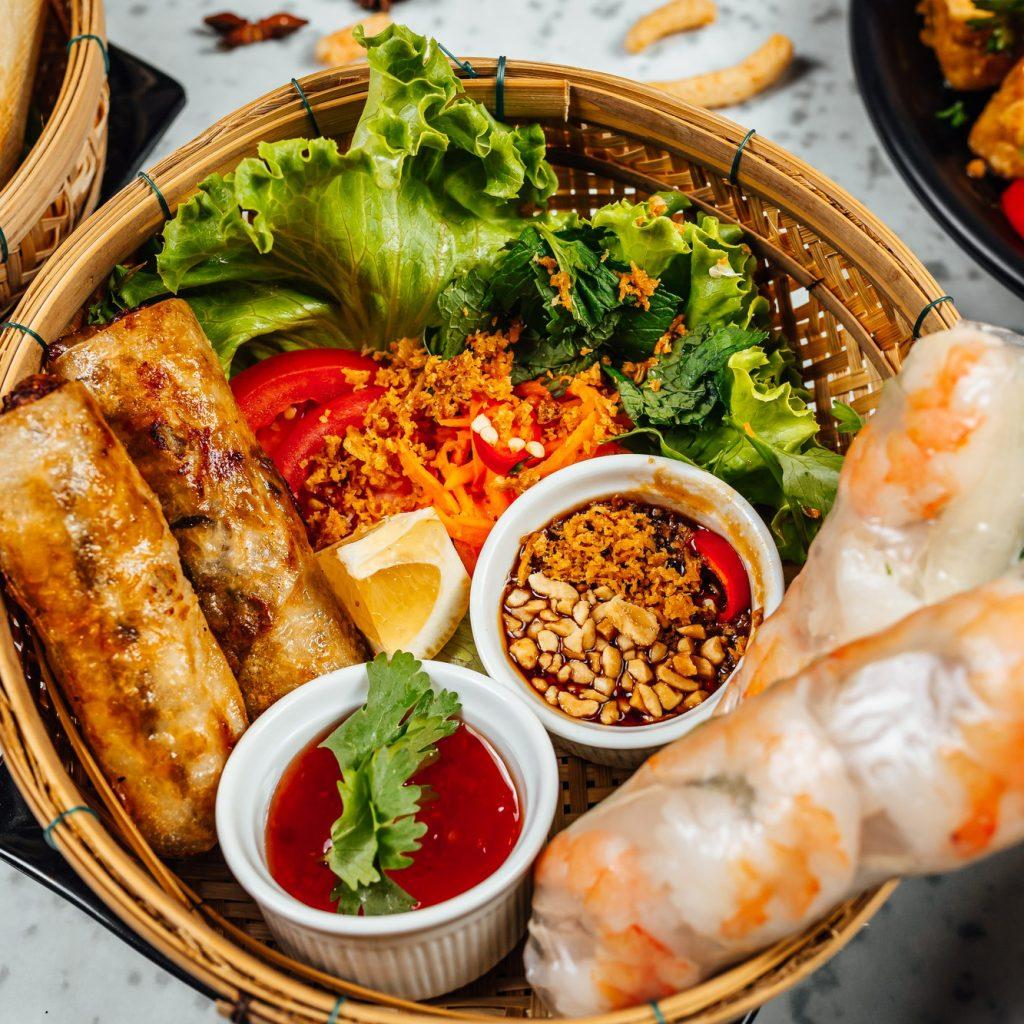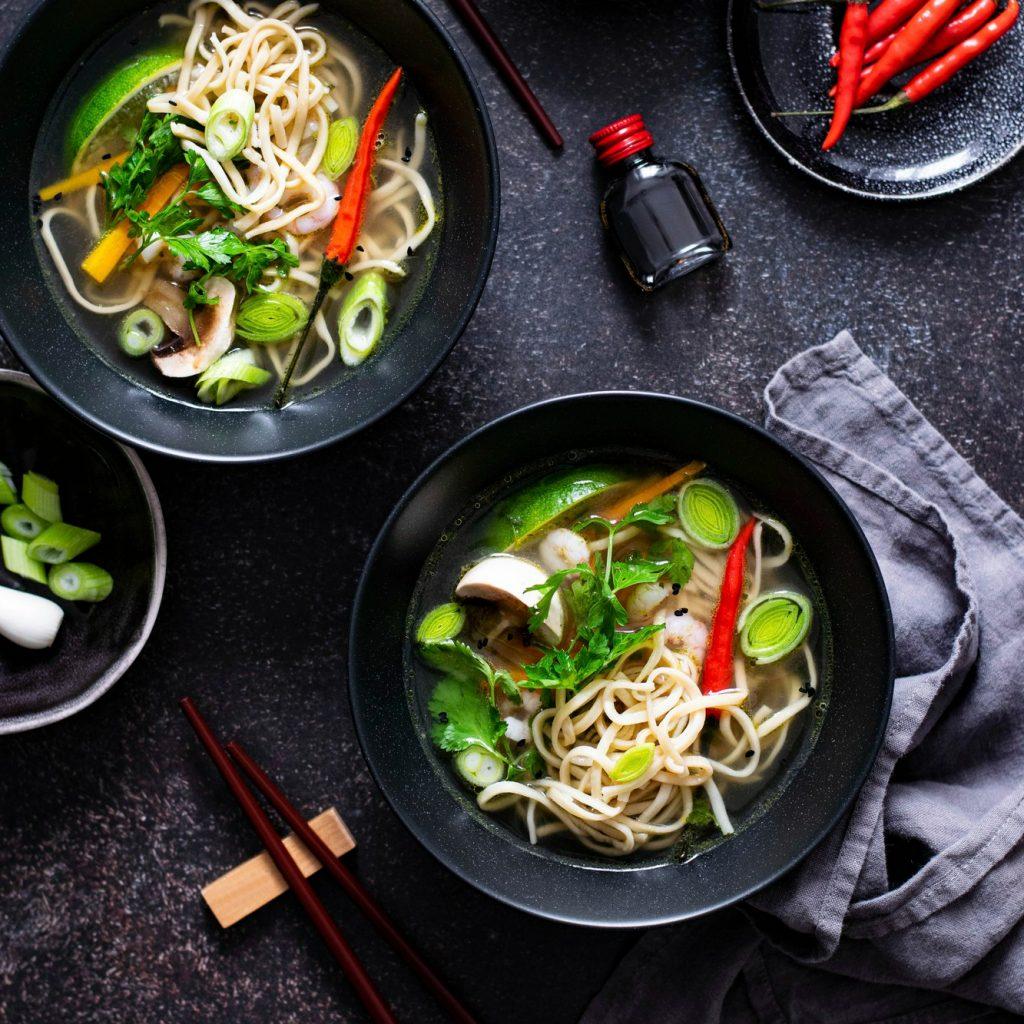
Sitting at the southeastern corner of the Asia landmass, Vietnam is a wonderful country that boasts beautiful nature as well as many eye-opening landscapes and views. Moreover, it is a foodie’s paradise, a place where you can get the best dishes with only minimal costs. Let us take you through some of the most unique dishes in the world of Vietnamese cuisine!
Vietnamese Cuisine at a Glance
The most important aspect of Vietnamese cuisine is the adherence to the Wuxing (Five-Phased) philosophy, which endorses the balance between the five fundamental tastes. Thus, Vietnamese chefs would always strive to keep this delicate balance, often by mixing different spices together to create a superior mix.
Another staple element of Vietnamese cuisine is the liberal use of aromatics in the cooking process. Herbs and aromatics like mint, lemongrass, long coriander, chilli pepper, cinnamon, etc. form an integral part of Vietnamese cuisine. Vietnamese cooks will also prioritize using fresh ingredients instead of prepared ones, and Vietnamese dishes tend to have an interesting texture with balanced tastes.
Due to the cultural history and geography of the two countries, Vietnamese cuisine is heavily influenced by Chinese cuisine. That said, Vietnamese foods do not contain nearly as much oil as Chinese foods, and the texture is much less rich. As the country also went through a period of French colonization, French influence is also quite prominent in Vietnamese culinary traditions. The French brought numerous Western ingredients to the country, adding even more variety to Vietnamese cuisine itself.
Regional Varieties in Vietnamese Cuisine
Like most other culinary traditions in the world, Vietnamese cuisine features diverse regional varieties that enrich the country’s culinary traditions. The three most prominent regions of Vietnamese cuisine are the North, Central, and South areas.
North Vietnam
North Vietnam is a region with lots of elevated areas and mountainous regions. Thus, herbs and other spices are not able to thrive, resulting in considerably less spicy food and less bold flavours. Instead of red chilli peppers, black pepper is used extensively to impart spicy flavours. Compared to food from the other two regions, North Vietnamese food is considerably more balanced and less bold, focusing on subtlety instead. Consumption of meat such as pork, beef, and chicken has been historically rare, but it has soared during the recent decades. As the region is the home of the Vietnamese civilization, it spawned numerous iconic dishes such as phở, bún riêu, and bún chả.
Central Vietnam
The old capital city of Vietnam, Hue, is located in the Central Vietnam region, which has transformative influences on the region itself. Hue Royal Culinary Tradition is a cultural heritage that dates back hundreds of years, with a high level of refinement and complexity. Hue royal cuisine places a strong emphasis on the decorative elements of the food, as each dish is a feast for not just the stomach but also the eyes. Some staples of Hue Royal Cuisine include bird’s nest soups, abalone, and peacock-shaped spring rolls. In terms of taste, royal dishes utilize elaborate ingredients that elevate them to a new level.
For the average citizen, the dishes are much more subtle and simple, albeit with a spicy twist. Central Vietnam is much more conducive to growing spices as well as herbs. As a result, the local cuisine makes extensive use of these spices, making their food particularly spicy and flavourful. Locals would also prefer having numerous smaller dishes to having one big meal.
Southern Vietnam
The land in the south of Vietnam is rich and extremely fertile, providing an abundance of different herbs as well as meats. As a result, local chefs prefer to use “cooler” spices such as garlic, shallot, and other fresh herbs. Another notable difference in the region is the liberal use of sugar in pretty much all dishes, even traditionally salty ones. This preference is partially due to the abundance of coconut trees in the region.
Southern Vietnam also boasts a long shoreline, along with numerous fishing grounds, enriching the local seafood varieties. Aside from fish, shrimp, cuttlefish, and shellfish are the most popular seafood choices in the region. Some of the most iconic seafood dishes in the region are bánh khọt and bún mắm.
As one goes further south, one is bound to reach the Mekong Delta region. This is an ethnically diverse region with different peoples living in the same area, and this is reflected in the culinary traditions as well. Palm sugar, a staple of the Cham people, is extensively used instead of traditional sugar. One will also find an abundance of dishes with clear Cambodian influences in the region, like lẩu mắm.
Vietnamese Feasts
Vietnamese feasts are a major cultural element of the Vietnamese culinary traditions. Feasts, otherwise known as cỗ, are organized only when there are huge communal celebrations such as weddings, commemorations, or funerals. A feast would include a vast range of elaborate dishes, only prepared during such celebrations. Interestingly, feasts have become noticeably less elaborate in most parts of the country, except for the North, where the tradition is still thriving.
Popular Vietnamese Dishes
Each of the three Vietnamese culinary regions offers delicious dishes that have claimed the hearts of not just local fans but also international foodies. Below are some of the most popular Vietnamese dishes that have made international headlines.
Phở
The icon of Vietnamese food. It is certainly tough to talk about Vietnamese cuisine without covering this ubiquitous dish. Often called Vietnamese beef noodles, phở is the most popular dish in Vietnam and in international communities. Originating in the northern region of Vietnam, phở is comprised of flat phở noodles, a special broth, and different cuts of beef. The exact ingredients of the broth differ from region to region, but the principal ingredients are anise, cinnamon, black cardamom, and beef bone marrow. Aside from the usual beef flank, a bowl of phở might also contain tendons, brisket, and beef slices, depending on the diner’s appetite.
Spring Rolls
A staple at a typical feast in the country, spring rolls symbolize spring and all the good things that come with it. Vietnamese spring rolls generally aren’t wrapped in pastry skins like Chinese ones. Instead, the locals would opt for rice paper instead, giving the rolls an even crunchier texture and a more alluring overall taste. The fillings would usually be a mix of meat, eggs, vermicelli, vegetables, and spices.
One would also find Vietnamese fresh spring rolls in the corners of every Vietnamese city. Unlike spring rolls, which require frying, fresh spring rolls need very little cooking. The average fresh spring roll would include boiled pork and prawns, fresh vegetables, bean sprouts, and a bit of herbs, all neatly wrapped in rice paper. To eat fresh spring rolls, one would dip them into a thick and rich peanut sauce for some umami taste.
Bún Bò
Yet another beef noodle bowl! Bún bò is an all-time favourite for the average Vietnamese person. Originating from Huế, bún bò might look a bit like phở at first glance, but the similarities are superficial at best. Bún bò employs a radically different set of ingredients from phở, so its broth will usually be richer as well as a little sourness. The broth is made from beef bone marrow to achieve the best taste as well as consistency you desire.
The toppings for bún bò might differ from region to region. For example, bún bò in Huế would include pork cakes or crab cakes, while in the South, locals would prefer to add tendons and briskets.
OrienBites: Your Gateway to Exotic Vietnamese Cuisine
With over 20 years of experience in food products, OrienBites features a wide range of exotic Asian snacks that offer unique culinary adventures to exotic distant destinations, from the comfort of your home! Our Vietnamese selection includes the most iconic dishes in the country’s culinary tradition, enabling you to enrich your menu with ease. Contact us now for more details!
Vietnamese cuisine offers a balanced taste palette that is easy to experience for newcomers while still presenting novelty to food aficionados. To experience the best of Vietnamese cuisine from thousands of kilometres away, check out our stock of delicious Vietnamese snack products!




